| Content | Rupert Neve Designs' Shelford Channel, over a half century in the making, is the definitive evolution of Mr. Neve's renowned 80 Series channel module technology, updated and refined for the contemporary studio. The Shelford Channel is fitted with Rupert's latest Class A transformer-gain mic preamp, the best-of-the-classics Inductor EQ from the Shelford 5052, a punchy diode-bridge compressor, the alluring analog textures of variable Silk saturation, a state-of-the-art dual-tap transformer output stage with massive headroom, and double the operating voltage of vintage designs. Offering rich tonal options for making audacious statements with your music, along with precision-detented controls for recall, the Shelford Channel delivers the authoritative sonic essence of classic Rupert Neve designs, along with modern versatility.
Input stage and transformer-gain mic pre
Rupert Neve's first new Class A, transformer-gain mic preamplifier in over 40 years makes its debut in the Shelford Channel. Rupert has spec'd this preamp with a direct-coupled transformer input; gain is provided by the custom transformer itself. The proprietary input transformer, and its meticulous integration with the surrounding Class A input amplifiers, plays an outsized role in the Channel's immediately recognizable sonics: punchy and creamy-smooth, with excellent isolation and vanishingly low noise.
The Shelford Channel's front-panel hi-Z instrument input uses the same discrete Class A field-effect transistor with transformer topology as Rupert Neve Designs' acclaimed RNDI; for gain, however, it utilizes the new RN4012 input transformer directly into the mic preamp. This design provides astonishing clarity on hi-Z sources, with substantial low-end weight and silky-smooth high frequencies. The DI also gives you a passive thru output to feed a guitar or bass amp.

- Mic-DI/Line: switches between microphone/direct injection input and line input
- GND Lift: disconnects the audio signal ground from chassis earth
- Signal LED: green indicates Signal Present; red indicates imminent input stage clipping
- Mic Gain: 12-way precision rotary, controls gain from 0dB to 66dB in 6dB steps
- Trim: rotary switch provides further continuous gain adjustment of +/-6dB
- 48V: switch engages phantom power on the mic input
- Phase: inverts the polarity of the signal path (illuminates when engaged)
- HPF Freq: engages a 12dB/octave highpass filter, variable from 20Hz-250Hz
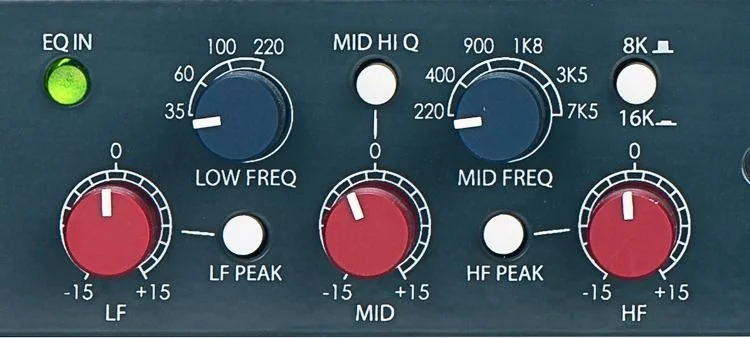
The best-of-the-classics inductor EQ
The Shelford Channel's EQ section is a 3-band, custom-tapped inductor circuit containing Rupert's favorite bands from his vintage equalizer designs. The low-frequency band is primarily based on the 1064 — acclaimed for its creamy, resonant bass. Unlike the 1064, though, the Channel gives you added dimension, punch, and control over your low end by letting you use the LF band as either a peaking or a shelving filter. The midrange band is based on the venerable 1073 and is perfect for sweetening instruments and vocals while nudging them forward in a mix. "Proportional Q" response also makes it ideal for attenuating problem frequencies. The high-frequency band is a hybrid design with the best of vintage and modern attributes. It should be noted that this EQ is in no way a clone; it's a decidedly modern design using components and techniques that simply did not exist in the 1970s — for instance, the use of capacitor-based topologies to achieve sonic richness and enhanced control.
- EQ In: engages all EQ frequency bands except HPF
- LF: adjusts up to 15dB of boost/cut at the selected low frequency
- Low Freq: 4-position rotary switch for selecting LF band corner or center frequency
- LF Peak: selects LF shelving (out) or peaking (in) mode
- Mid Hi Q: selects between a mid-band resonance of 2 (out) or 3.5 (in)
- Mid: adjusts up to 15dB of boost/cut at selected mid frequency
- Mid Freq: 6-position rotary switch selects center frequency of the midband EQ stage
- HF Peak: selects HF shelving (out) or peaking (in) mode
- 8K/16K: selects between an 8kHz (out) or 16kHz (in) center or corner frequency for HF band
- HF: adjusts up to 15dB of boost or cut at selected high frequency
The Super Diode-bridge Compressor
Like the Shelford Channel's inductor EQ and transformer-gain microphone preamp, the diode-bridge compressor/limiter is based on the topologies found in vintage Neve designs such as the 2254. It improves, however, on the early designs by the inclusion of full-wave rectification and a bevy of new control features. Although Rupert's vintage diode-bridge compressors were prized for their warm, punchy response, they were somewhat compromised by imprecise controls, attack-time inflexibility, low headroom, and high noise. The Shelford Channel's Super Diode-bridge Compressor delivers the attitude-packed, "in your face" sound of those classics, but with modern precision and flexibility — which makes it ideal on any source. Full Side-chain and stereo Link features are provided.
- Side Chain Insert Jacks (rear-panel): for fine tuning of compressor operation
- Comp In: engages the Channel's compressor-limiter section
- Threshold: sets level where the compressor "kicks in"
- Ratio: sets compression slope from 1.5:1 (minimal) to 8:1 (heavy)
- SC Insert: inserts rear-panel sidechain insert jacks into sidechain signal path
- HPF to S/C: routes highpass filter into the circuit that compressor uses to determine level
- Gain: for adding make-up gain to compensate for level attenuation lost to compression
- Timing: 6-position rotary adjusts attack/release speed of the compressor
- Link: links the sidechain control of multiple units for ganged or stereo operation
- Pre EQ: changes the order of compressor in the circuit chain
- Blend: mixes the dry and compressed signal for handy parallel compression
- Fast: speeds up both attack and release of the selected compressor time constant
Dual-tap transformer output
The Shelford Channel's output stage serves up the inimitable sound of Rupert Neve's classic designs while providing far more tonal versatility. The dual-tap output for the RN2042 square-core output transformer provides both high- and low-headroom outputs without compromising performance. The high-headroom tap takes advantage of the Shelford's higher-voltage design, delivering a pristine sound without non-linear output-stage coloration at high levels. The low-headroom tap, on the other hand, lets you drive the full voltage range of the Channel to accentuate this non-linear harmonic content — without clipping most pro interfaces. For vocals, drums, guitars, bass, and other instruments, this output lets you hit the transformer's sweet spot, which can inject life into a recorded performance in a way that other effects cannot.
The Silk and Texture controls
The Shelford Channel is packing a secret weapon the classics never had: its output transformer features the Silk Red/Blue and Texture controls from the Portico II Series that let you tailor the harmonic content and tonality of the output stage. By engaging these controls and sufficiently driving your output, you can dial in delectable 2nd- and 3rd-order harmonic distortion (that's the good kind) and saturation of the output transformer, imbuing your tracks with juicy rich thickness (think: 1073 on steroids) — with no danger of overloading the output stage. The Silk Red mode emphasizes harmonic content generated by the source's high frequencies; Blue mode, conversely, works off the low frequencies. The Texture knob controls the amount of added harmonic content. Disengage Silk, and your output is pristine and modern, while retaining Rupert's bigger-than-life transformer sonic signature.
The magical sound of Neve
Rupert Neve is an audio legend whose electronics designs defined the golden age of analog. Those of us at Sweetwater who have had the privilege of working on a Neve 8078 or its predecessors can attest to the fact that Neve's Series 80 consoles were indeed the pinnacle of hand-wired analog mixing desks. Mr. Neve has remained at the forefront of audio-circuit innovation for over half a century, and his current company, Rupert Neve Designs, continues to advance the state of the art with cutting-edge products that sound incredible and intelligently address the challenges of the digital age.
Rupert Neve Designs Shelford Channel Features:
- The definitive evolution of Rupert Neve's renowned 80 Series channel module technology
- A complete channel strip that delivers the essence of classic designs, along with modern versatility
- Input stage and transformer-gain mic pre
- Front-panel hi-Z direct input
- Best-of-the-classics inductor EQ
- Super Diode-bridge Compressor
- Dual-tap transformer output
- Silk and Texture controls
| The Rupert Neve Designs Portico II Master Bus Processor lets you enhance, reshape, and polish your sound to perfection. Whether you want to add finishing touches to your master bus, level out a stereo group, or add new life to mono sound sources, the Portico II Master Bus Processor gives you the compression, limiting, and stereo field manipulation you need. Featuring custom input and output transformers designed by Rupert Neve, the Portico II Master Bus Processor implements the same ultra-smooth Class A signal processing made famous by the 5088 console and the Portico II Channel, as well as 72V topology, which gives it enormous headroom while allowing it to integrate seamlessly with virtually any system. If you’re serious about your sound, then it’s time to ask your Sales Engineer about the Rupert Neve Designs Portico II Master Bus Processor!
Powerful and flexible compression
Both channels of the Portico II Master Bus Processor feature one of Rupert Neve Designs’ most versatile compressors to date. Whether you want to add punch to your mix or smooth out your vocal subgroup, the Portico II Master Bus Processor has the compression you need. Controls for ratio, threshold, attack, release, blend, sidechain highpass filter, limiting, and makeup gain let you dial in the perfect dynamics quickly and easily. Use the two compressors independently, or instantly link them with the push of a button. Variable Silk Red/Blue Texture controls let you add classic Neve harmonic warmth; while a blend control lets you dial in the dry signal for instant parallel processing, so you can get all of the compression you want without losing transients. In addition, the Portico II Master Bus Processor gives you a choice of either vintage-flavored feed-back or modern-sounding feed-forward compression modes.
Transparent, musical limiter that’s effortless to use
Often overlooked at first glance, the Portico II Master Bus Processor’s 1-knob limiter is a powerful, flexible, and remarkably easy-to-use tool that lets you get the most out of the Portico II Master Bus Processor’s compression section. Rupert Neve Designs’ Adaptive Release Technology gives this limiter its unique ability to grab onto fast transients, without smothering the rest of the signal. Plus, you have the option to blend compressed and dry signals together for parallel processing that maintains natural-sounding dynamics without clipping. This gracious behavior means you can set it and forget it, with the added security of knowing your masters will be free from clipping and broadcast-ready.
Sidechain inserts for creative ducking
Every dynamics processor has a sidechain circuit that examines the signal and determines how much the VCA will reduce gain — but not every unit provides access to its sidechain. In compressors without a separate sidechain input, your main input signal is, essentially, compressing itself. With compressors like the one in the RND Portico II Master Bus Processor, you can insert external processing on the sidechain — or introduce a different signal that determines the compression action on the main signal. It’s an incredibly useful feature that lets you, for instance, automatically duck a track to make space for another (very popular for that EDM mix pumping effect). Combined with the sidechain HP filter, it gives you an impressive amount of tonal versatility.
Amazing Stereo Field Editor
Although the Rupert Neve Designs Portico II Master Bus Processor functions wonderfully as a dual-mono processor, it really shines in stereo mode. That’s thanks to its unique Stereo Field Editor. The Stereo Field Editor uses advanced Mid/Side stereo manipulation techniques, allowing you to adjust your stereo bus’s width, depth, and ambience. Beyond widening your stereo image, the Portico II Master Bus Processor can actually bring center-panned instruments out in your mix. That makes the Portico II Master Bus Processor an invaluable tool for mastering, as well as defining the spread of your subgroups during mixdown.
The legend continues
Rupert Neve’s 80 Series consoles had a huge, punchy, and authoritative sound that defined the sound of ’70s rock. From London to New York to Los Angeles and beyond, top studios were installing Neve boards as fast as they could. By 1977, with the introduction of the NECAM automation system, 80 Series boards were the main component of the success formula for any recording studio with world-class aspirations. Mr. Neve’s current company, Rupert Neve Designs, continues to advance the state of the art with cutting-edge products that sound incredible and intelligently address the challenges of the digital age. With your Rupert Neve Designs Portico II Master Bus Processor from Sweetwater, the legend continues.
Rupert Neve Designs Portico II Master Bus Processor Features:
- Powerful 2-channel compressor/limiter/stereo field manipulator
- Custom input and output transformers designed by Rupert Neve
- Full compression sections for both channels, including attack, release, ratio, and threshold controls
- Sidechain inserts and highpass filters for both compressors
- Feed-back/Feed-forward switch lets you select between vintage-style and modern compression modes
- Silk Texture control with Red/Blue modes for classic Neve harmonic warmth
- Blend controls allow you to mix dry signal back into your compression, preserving transients while adding punch
- Simple and highly musical 1-knob limiter with Adaptive Release Technology allows for brickwall limiting that doesn’t distort or affect signal under the threshold
- Stereo Field Editor section includes independent level and EQ for width and depth, allowing you to dial in the perfect stereo field
| Rupert Neve Designs RNHP is a state-of-the-art headphone amplifier. Now when Mr. Neve turns his attention to anything, you know it's going to be good. And spectacularly so. What the RNHP delivers is reliable, reference-grade amplification for any pair of headphones. Based on the headphone amp in the RND 5060 Centerpiece, the dedicated 24-volt design is spec'd with calibrated +4dBu Line, RCA, and 1/8" stereo inputs. Everything's housed in a road-tough, VESA-mountable steel chassis. The unit's effortless sonic performance and the ability to drive virtually any 'phones without compromise let you perform, mix, and savor your music with stunning clarity.
Rupert Neve Designs RNHP at a Glance:
- Unerring accuracy for better performances
- The benefits of near-zero-ohm output impedance
Unerring accuracy for better performances
You know you perform your best when your cans sound great - and that's where the RNHP can make a huge difference. Many integrated headphone amps are plagued with a non-linear frequency response, as well as noise, distortion, and skimpy headroom. To some, these units' lackluster sonic performance may seem "close enough for rock 'n' roll," however at Sweetwater, we believe there is the performer's subconscious response to consider. After all, if you're not inspired by what you're hearing, your performance will suffer.
The benefits of near-zero-ohm output impedance
Rupert Neve Designs spec'd the RNHP with near-zero-ohm output impedance to minimize frequency-based reactive-load impedance shifts - a problem unique to headphone monitoring. This ensures accurate sound reproduction, which is obviously important if you need to trust the decisions you make with headphones. You'll find the RNHP's unerring accuracy beneficial when you're using just one set of cans, and also when you're comparing a mix on multiple pairs of headphones.
Rupert Neve Designs RNHP Features:
- Reliable, reference-grade amplification for any pair of headphones
- Based on the headphone amp in the RND 5060 Centerpiece
- Effortless sonic performance
- The ability to drive virtually any headphones
- Dedicated 24-volt design
- Calibrated +4dBu Line, RCA, and 1/8" stereo inputs
- Near-zero-ohm output impedance minimizes frequency-based reactive-load impedance shifts
- Road-tough, VESA-mountable steel chassis
| Rupert Neve Designs R6 500 Series chassis is a 6-space, steel rack enclosure that sports XLR, TRS, and DB-25 I/O to work with any studio setup. To ensure your modules are properly powered, the R6 has 150% of the required current, so you'll never be underpowered. It also has a built-in LED display to show current consumption and a double-shielded internal power supply that won't add any interference or unwanted noise to your signal. Rupert Neve is an audio legend. So you know when he designs a 500 Series chassis, it's top-shelf, all the way. Give your 500 Series modules the pampering they deserve with the Rupert Neve Designs R6 500 Series rack.
Genius in the details
With the Rupert Neve Designs' RND R6, there's genius in the details. The R6's double-shielded internal power supply was meticulously designed to avoid magnetic induction in any of its module slots. The power supply is a Switchmode type, and great care was taken to ensure that the frequencies are considerably outside the audible band. There's an internal jumper configuration that makes it easy to link slots in pairs. It's even fitted with variable-position screw holes that slide to accommodate modules that are slightly out-of-spec, which makes the insertion of modules quick and easy. Trust Sweetwater: when it comes to 500 Series racks, the RND R6 is as good as it gets.
Rupert Neve Designs RND R6 500 Series Rack Features at a Glance:
- Supplies 150% of the required current
- LED current consumption meter displays available current
- XLR, TRS, and DB-25 I/O
- Variable-position screw holes make for quick and easy module insertion
- Double-shielded internal power supply designed to avoid magnetic induction in module slots
- Switchmode PSU with frequencies considerably outside audible band
- Internal jumper configuration lets you link slots in pairs
| MARANTZ NR1200 STEREO RECEIVER
2ch Slim Stereo Streaming Receiver with HEOS Built-in
Indulge in high-resolution sonic perfection with the Marantz NR1200 two-channel slim stereo receiver that powers detailed, high-fidelity audio from a compact chassis. At half the height of a traditional receiver, the NR1200 drives impeccable sound for your movies, shows, hi-fi audio and more. The NR1200 supports the latest HDMI connectivity with its 5 inputs, each one supporting HDCP 2.3, 4K Ultra HD 60Hz video, HLG and more. Stream music from leading music services and control the NR1200 with voice control compatibility via Amazon Alexa, Google Assistant, and Apple Siri.
Features
- Slim profile that’s half the height of a traditional AV receiver: Delivers exceptional performance and sound quality
- Power to suit your audio preferences: Two-channel discrete power amplifier with separate L/R power amp circuit and power transformer with 75 W per channel (8-ohm, 20 Hz – 20 kHz, 0.08% THD)
- Hi-Fi construction and performance: Engineered with dedicated Hi-Fi parts for two-channel Hi-Fi performance, including custom-designed power capacitors, sound parts exquisitely tuned by sound masters and dual DAC circuit design
- Versatile HDMI ARC connectivity: 5 HDMI inputs with full HDCP 2.3 support plus one HDMI out with ARC support for single cable connection with your television
- Flexibility for all configurations: Speaker A/B, tone control to tune the sound to your exact specifications and dedicated dual subwoofer output for evenly dispersed bass, and no audible peaks or dips
- AM / FM tuner: Hear all of your favorite radio stations with exquisite detail
- Play vinyl with exceptional clarity: Integrated phono input that easily connects to your turntable
- Drive an exceptional gaming experience: Auto Low Latency Mode (ALLM) ensures Xbox One users have a more responsive and immersive gaming experience when connected with select TV models that also support ALLM
- Smart TV connectivity: Control the NR1200 with your TV remote, and HDMI-CEC support for seamless pass-through of the latest picture and audio coding from your TV to the stereo receiver
- High-performance, high-resolution audio playback: Ability to decode high-resolution audio ALAC, FLAC and WAV lossless files up to 24-bit/192-kHz — plus, DSD 2.8MHz and 5.6MHz tracks for high-resolution listening
- HEOS Built-in: Enjoy more flexible music streaming in one room or many
- Stream your favorite music from popular services: Play music on Spotify, Pandora, TuneIn, Deezer and many others via Bluetooth, AirPlay 2 or the HEOS Built-in app
- Integrate with your home-network: Built-in Wi-Fi with 2.4GHz/5GHz dual band support (dual antenna)
- Speak your commands: Supports all major voice control agents and streaming services for seamless control
Specifications
NETWORK
- HEOS multiroom and streaming, Wi-Fi, Bluetooth, AirPlay 2
- FLAC / ALAC / WAV up to 192/24
- DSD up to DSD5.6
- TuneIn internet radio
- Spotify Connect, Deezer, Tidal, Napster, Pandora, Sirius XM
HDMI
No. of inputs: 5
No. of outputs: 1
Supported formats / features:
- 4K 60 Hz 4:4:4, HDCP 2.3
- Enhanced ARC
- HDR / HLG
- 3D signal pass-through
- HDMI pass-through in stand-by
OTHER INPUTS AND OUTPUTS
Audio
Analog in: 3
Phono (MM): 1
Digital in (optical / coax): 1 / 1
USB (iPhone, iPod): 1
Multichannel pre-out: 2.2
Subwoofer out: 2
Power output (8 ohm / 6 ohm): 75 W / 100 W
Dimensions (WDH): 17.3" x 14.9" x 4.1"
Weight: 18.1 lb | Working inside the box? Sweetwater would like to recommend a summing mixer that will seriously up your game: the Rupert Neve Designs 5059 Satellite Shelford Edition. If you record and mix entirely within your DAW, you’re hampered by the inability to leverage the sonic advantages of high-quality analog outboard gear. Enter the 5059 Satellite. The 5059 gives you 16 channels — each with individual level and pan, plus insert and bus-2 send buttons. You get two stereo buses with RND’s proprietary Silk Texture controls, giving you effortless integration with outboard equipment, total control for two separate stem mixes, and the facility to dial in harmonic enhancement in two distinct flavors.
It’s a Neve
In serious audio circles, Rupert Neve needs no introduction. Large-format Neve consoles from the 1970s are considered by many to be the pinnacle of analog mixer design. Boasting the same design heritage and sonic perfectionism that went into the boards used to record countless hit records, the 5059 Satellite Summing Mixer graces your tracks with legendary Rupert Neve warmth, punch, and presence. With 16 channels of Rupert Neve designed Class A alchemy and flexible tonal and routing options, the Rupert Neve Designs 5059 Satellite Summing Mixer will take your DAW-based studio’s sound to a whole new level.
Dial in the Silk
The Rupert Neve Designs’ 5059 Satellite Summing Mixer’s continuously variable Texture controls with Silk and Silk+ modes let you fine-tune the harmonic ratio and tonality of each of 5059’s stereo buses. The Silk mode adds sparkle to your tracks by introducing alluringly airy transformer saturation in the high frequencies. Silk+ mode accentuates saturation in the low frequencies, adding density and thickness to the source — particularly desirable when you’ve got a dry, lackluster mix. Distinctly different sounding from equalization, Texture saturates the output transformers, adding sweet, musical even-order harmonics to your source material for authoritative, radio-ready mixes that blast right out of the speakers.
Flexibility: it’s a beautiful thing
The dual stereo outputs of the Rupert Neve Designs 5059 Satellite Summing Mixer are perfect for creating stem mixes, which you can enhance using the 5059’s Silk/Texture controls, then process through bus compressors or other devices via the inserts, finally feeding into the inputs of another mixer or your interface. You can send any input to stereo bus 1 or 2, and create two very different-sounding mixes from the same 16 channels. These are just some examples of the amazing flexibility you’ll enjoy when integrating the 5059 into your recording rig. Smartly attired in classic Shelford livery, the Rupert Neve Designs 5059 Satellite Summing Mixer is housed in a rugged, fan-cooled 2U steel chassis for dependable, no-compromise professional performance year after year, in the studio or on the road.
The legend continues
Rupert Neve’s 80-series consoles had a huge, punchy, and authoritative sound that defined the sound of ’70s rock. From London to New York to Los Angeles and beyond, top studios were installing Neve boards as fast as they could. By 1977, with the introduction of the NECAM automation system, 80-series boards were the main component of the success formula for any recording studio with world-class aspirations. Mr. Neve’s current company, Rupert Neve Designs, continues to advance the state of the art with cutting-edge products that sound incredible and intelligently address the challenges of the digital age. With your Rupert Neve Designs 5059 Satellite Shelford Edition from Sweetwater, the legend continues.
Rupert Neve Designs 5059 Satellite Summing Mixer Shelford Edition Features:
- Classic Neve: Class A, all transformer-balanced, and awesome-sounding
- Zero crossover distortion and unmatched purity
- Custom transformers provide galvanic isolation and serve up "larger than life" sound
- Sets a standard for rackmountable summing mixers
- 16 inputs/channels (with level controls, pans, and inserts); 2 stereo buses
- Send any input to stereo bus 1 or 2, each with variable Silk/Silk+ Texture
- Dual Stereo Outputs let you split the input channels into 2 stems for further processing and mixing
- Stereo buss 1 and 2 each has its own XLR outs
- DB-25 line input, insert send/return connectors
- Rugged 2U fan-cooled chassis, clad in classic Shelford livery
|


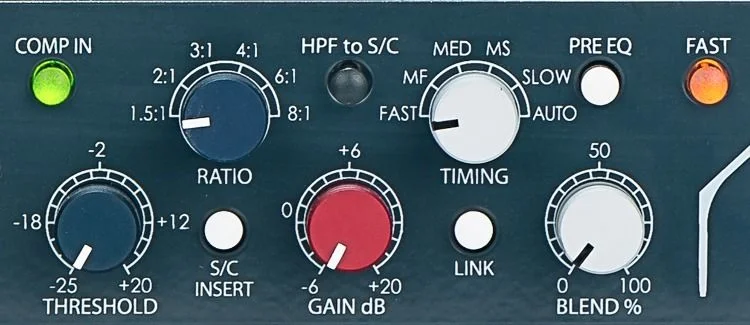




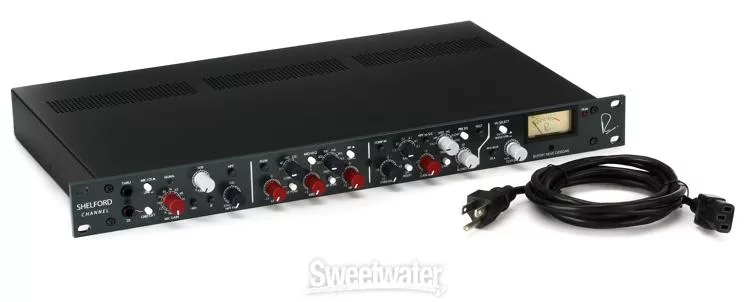











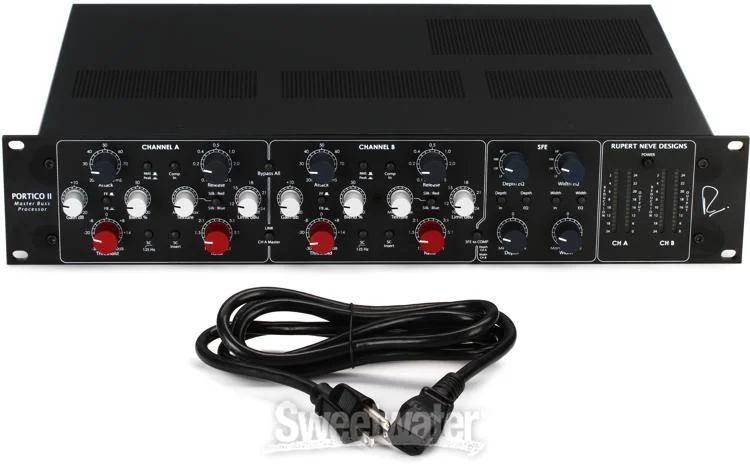


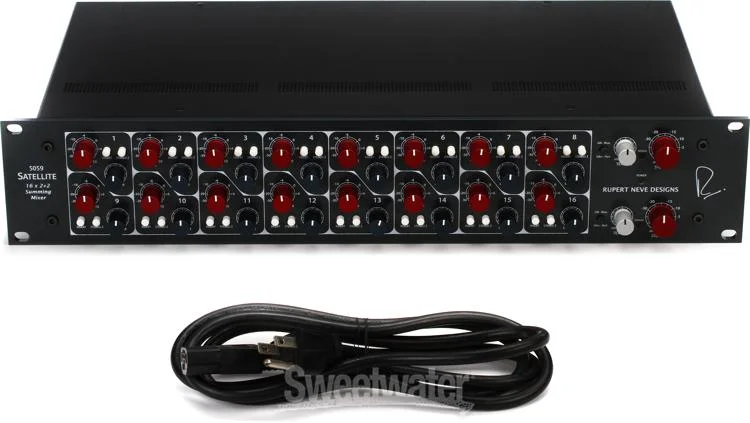


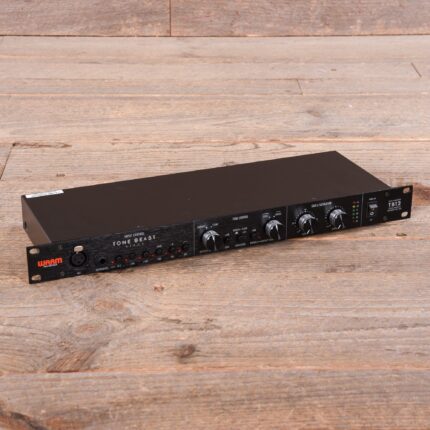
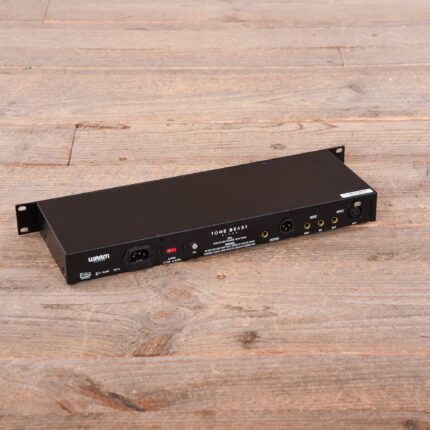







Reviews
There are no reviews yet.